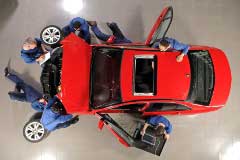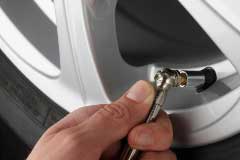Simple Maintenance Tips For Between Tune Ups - Vol.20
A "tune up" is a vehicular term used to mean standard maintenance for your vehicle. It involves giving your vehicle a check up and inspecting and replacing as necessary, items such as air, gas and oil filters, changing the oil and inspecting the spark plugs. Most vehicle diagnostics today are done with computers, unlike in the days of old when a vehicle owner could turn their garage into a Saturday Maintenance Shop and do the job themselves.
I could never understand when I brought my car to the garage for a tune up or regular maintenance, wind shield wipers were never part of the deal. It was almost as if they were not important enough to consider. I had to request wiper replacement if I thought they were losing their integrity. I actually changed the windshield wipers myself once. As I was driving on the highway one morning on my way to work, the rain and snow was falling to beat the band. My wipers were wiping like they were supposed to but suddenly, without warning, they went to the left – and kept going, right off the car. Fortunately, I wasn't far from repair station and was able to get them replaced. The repair guy laughed when I told him what happened. I bet he is still laughing about that to this day.
Vehicle manufacturers recommend periodic maintenance for different milestones your vehicle achieves. In between those visits, there are things the owner can do to help keep their pride and joy in top mechanical condition.

Check the oil once in a while. With the engine warm, remove the dipstick from the oil reservoir and wipe it clean. Reinsert the dipstick and take it out again. You will see the level of the oil in your vehicle. The dipstick has markings on it that will tell you if the level okay or if you need to add. If you find yourself adding oil often, that may indicate some kind of mechanical problem that you should have checked. If you add oil, be sure you put the cap back on the oil reservoir. The same for the dip stick. Be sure you put it back in its rightful place.

Check the air in your tires. Pressure check gadgets cost but a few dollars and can be purchased at any store that deals in automotive parts. Remove the cap from the valve stem and insert the gauge onto the stem. That will release a puff of air and measurements on the gauge will tell you how much air is in the tires. As a responsible vehicle owner, you will know what the optimum pressure is or know where to find it. You can add air any place that has a compressor. Most gas stations and some convenience stores have and air stand.
It is easy to check the integrity of the coolant in your radiator. First you will need a coolant hydrometer. If your vehicle has a coolant reservoir, check the coolant there. If not, you will have to open the radiator. Open the radiator when it is cool. When it is hot, it is under pressure and you may be showered with yellow or green liquid. Insert the hydrometer for a minute or so and remove. The scale on the hydrometer will tell you whether the coolant needs to be replaced or not. Take note of the level of the coolant. If it is down significantly from the optimum level, you may have a leak some place.
Check the air filter for excess dirt, grit and debris. The air filter traps the junk and prevents it from getting into the engine. If the air filter is clogged with dirt and dust, replace it before you do too much more driving. Do not try to clean the old filter. They are fairly inexpensive and you won't have to worry if you've damaged it or not. By being proactive with your maintenance, you will keep your car in good running condition and hopefully minimize repairs.